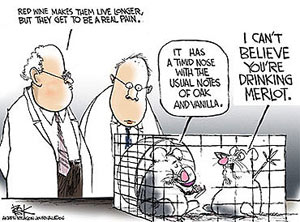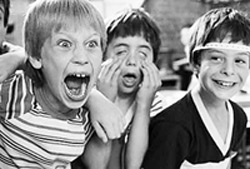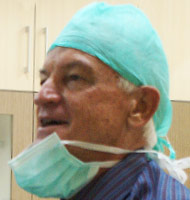
Reviewed 10 August 2021
Why Not Computer Diagnosis ?
For years there has been hype that computer diagnosis would soon replace doctor diagnosis: You would simply tap in your symptoms and your search engine would pop up your diagnosis, treatment and long term outcome and, best of all, no fee attached.
Sounds good ! Sadly computer diagnosis has a way to go.  One recent attempt at medical diagnosis by a well known search engine produced a 58% correct diagnosis rate.
One recent attempt at medical diagnosis by a well known search engine produced a 58% correct diagnosis rate.
Computers cannot accurately collect relevant medical data, let alone clinical or cultural nuances from patients largely because there are so many different ways of describing symptoms such as pain.
Doctors rapidly eliminate irrelevant information and assess the information they collect in a traditional medical way and usually can then intuitively take a rapid short cut to get to a "good-enough" decision. If doctors are uncertain of a diagnosis they simply ask a colleague for help.
The dream of a computer system that can "think" better, faster and more comprehensively than a human being is not yet realised. The other real problem is diagnosis depends on the three spatial dimensions plus a fourth dimension of time. Computers work in two dimensions.
Currently the real value of computers in health is providing accurate medical information for doctors, especially when uncommon diagnoses are being considered.
About 100 million Americans search for medical information each year – outnumbered only by the hordes accessing pornography ! That patients can rapidly check information about their diagnosis is a real advance in medical treatment especially as patients only recall about 25% of their doctor-given information.
MRI and CT scanners are currently by far the most important computerised advances in medical diagnosis assistance.
Alcohol . . . . a Social Oil with BIG Problems
Alcohol is certainly a social oil, it improves social interaction, helps generate fun times and it tastes OK as well. Like all good things alcohol has its downside. About 10% of Australians  have a significant alcohol problem which in turn causes more social disruption than illicit drugs.
have a significant alcohol problem which in turn causes more social disruption than illicit drugs.
Alcohol is a central nervous system (CNS) depressant which can badly affect brain function even in very small concentrations. The degree of CNS impairment is directly proportional to the Blood Alcohol Concentration (BAC). Peak BAC is usually achieved about 1 - 2 hours after drinking alcohol but more slowly if eating at the same time.
Usually the less you weigh the more you will be affected by a given amount of alcohol. In general, if males and females of the same weight ingest the same amount of alcohol the females will achieve a higher BAC.
| BAC | STAGE | SYMPTOMS |
| 0.02 - 0.05 | Subclinical | Almost normal behavoir |
| 0.05 - 0.12 | Euphoria | Decreased inhibitions, reduced judgement |
| 0.09 - 0.25 | Excitement | Loss of critical judgement & comprehension |
| 0.18 - 0.30 | Confusion | Disorientation, confusion, incoordination |
| 0.25 - 0.40 | Stupor | Unable to stand, impaired consciousness |
| 0.35 - .0 50+ | Coma | Unconscious or possible death |
Alcohol is most rapidly absorbed when the alcohol concentration of the drink is between 10% and 30%. e.g. Full Strength Beers contain 3.2 - 5.0% alcohol, Table Wines 7.0 -14.0% and Spirits 35 - 50%.

The liver breaks down 95% of ingested alcohol. The rest is eliminated through your breath (hence use of police breath testing), urine, sweat, faeces, milk and saliva – all contain the same alcohol concentration.
Alcohol is broken down at about one standard drink per hour, and more slowly the older you are.
Hangover symptoms are largely caused by dehydration and the toxic alcohol breakdown products e.g. acetaldehyde – check the taste and smell of that in your chemistry lab !
You cannot "sober up" by somehow increasing this alcohol elimination rate no matter what you take. Using fructose is an urban myth ! Time is the only hangover cure.
Iron Deficiency is Common in Jakarta
Anaemia occurs when there is not enough haemoglobin in your blood.  Haemoglobin carries oxygen in your blood and needs Iron for its production. There are several causes of Anaemia but Iron deficiency is easily the most common cause of Anaemia in Jakarta.
Haemoglobin carries oxygen in your blood and needs Iron for its production. There are several causes of Anaemia but Iron deficiency is easily the most common cause of Anaemia in Jakarta.
WHY ?
Simply because most expats eat little red meat in Jakarta. A dietary lack of iron makes Anaemia even more common in females because of their monthly cycle. Up to 20% of females can be iron deficient.
The symptoms of Anaemia are usually vague but include some combination of :
• Tiredness & weakness • Decreased exercise ability
• Low energy levels • Headaches
• Pale skin and conjunctiva • Dizziness
• Thin, brittle, flattened nails • Poor concentration
• Cold hands and feet • Low, listless mood
Anaemia and your Iron level are easily checked with simple blood tests. If you are Anaemic it is important not to simply start taking Iron tablets. The actual cause of your Anaemia must be determined first.
Maybe you are not iron deficient but are Anaemic from another cause -perhaps you are bleeding very slowly from a stomach ulcer or a bowel cancer or you are vitamin B12 deficient or females may need a gynaecology review.
Once the cause of your Anaemia is identified treatment is usually simple, especially if it is just an iron deficiency.
Does Sugar make Children Hyperactive ??
No it does not. What absolute rubbish I hear many a parent cry ! Well in at least 12 studies scientists examined how children react  to diets containing different levels of sugar.
to diets containing different levels of sugar.
None of these studies, not even studies looking specifically at children with ADHD could detect any differences in behavior between the children who had sugar and those who did not. The studies included artificial and natural sources of sugar.
Interestingly, in one study, parents who were told their children had been given sugar when they hadn't, noted that the child was more hyperactive.

Is There Any Hope for Humanity?
A young male was shot by police during a robbery. His sister came to A & E an hour later. Doctors informed her that her brother had been shot during a robbery.
Her angry response was: " They shot him for that ? He's robbed people before and they never shot him. Why did they shoot him this time ? "
True story !




